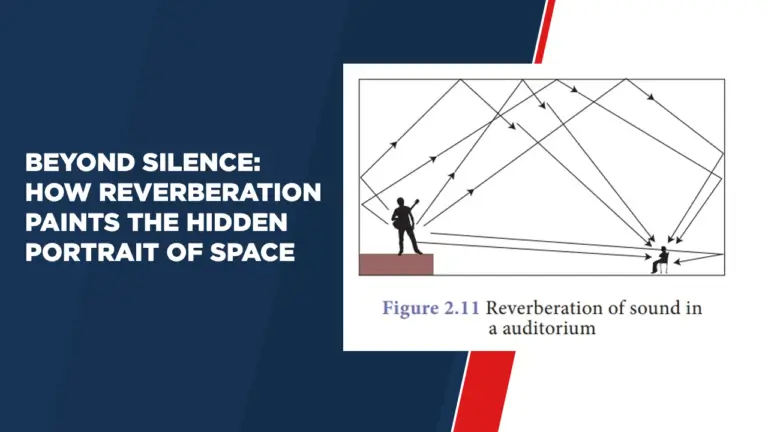Beyond Silence: How Reverberation Paints the Hidden Portrait of Space
Introduction
Echo is a fascinating acoustic phenomenon that plays an important role in shaping our auditory experiences in different environments. Whether you’re standing in a grand concert hall, an empty cathedral, or a bustling restaurant, the reverberation of sound significantly affects how we perceive and interact with our surroundings. In this article, we discuss in depth the concept of echo, its causes, methods of reducing it, and interesting ways of its application in various settings.
What is Reverberation?
In the context of sound, echo refers to the persistence of sound waves in an enclosed space after the original sound source has dissipated. When sound waves hit surfaces within a room, they are reflected from these surfaces, creating a complex web of reflections that overlap and mix with the direct sound. These reflections keep bouncing off until their energy is eventually absorbed by the surrounding materials or dissipated in the air. The cumulative effect of these reflections gives rise to the characteristic sonic “tail” that follows the sound incident, commonly called an echo.
Causes of Reverberation
Echo in a hall is primarily caused by the interaction between sound waves and surfaces in space. Hard surfaces such as walls, ceilings, and floors reflect sound waves more effectively, increasing the echo time. Additionally, the volume of the space, as well as its furnishings and architectural elements, can affect the degree of resonance. A large, empty room will generally resonate longer than a small, furnished room.
How Can Reverberation Be Reduced?
In venues where excessive resonance can be problematic, such as concert halls, recording studios and lecture halls, it becomes necessary to manage the acoustic environment. This can be achieved in various ways:
- Acoustic panels and diffusers:
Strategically placing acoustic panels and diffusers on surfaces can help absorb and scatter sound waves, reducing their intensity and preventing excessive echo.
2. Sound-reflective surfaces:
Incorporating soft materials such as carpet, curtains and upholstered furniture can help absorb sound energy and reduce the intensity of reflections.
3. Acoustic design:
Architectural modifications, such as incorporating irregular surfaces and varying room shapes, can reduce the formation of standing waves that contribute to long-lasting echoes.
Reverberation’s Applications
While excessive resonance can be a challenge, controlled and deliberate resonance is used creatively in a variety of applications:
– Music production: In the recording studio, controlled echo can add depth and dimension to recorded music, creating a sense of space and immersion.
– Cinematic Experience: In movie theaters, carefully designed reverb can enhance the auditory experience, allowing viewers to feel more connected to the on-screen action.
– Virtual Reality: In virtual reality environments, simulated echoes can contribute to a more realistic and immersive experience by accurately replicating various virtual environments.
Conclusion
Resonance is a natural acoustic phenomenon that significantly affects our perception of sound and our habitat. Although this may pose challenges in some contexts, its careful management and creative use allows us to shape listening experiences in diverse and innovative ways. By understanding the causes of resonance, employing effective reduction techniques, and harnessing its applications, we can continue to explore the dynamic relationship between sound and space.




